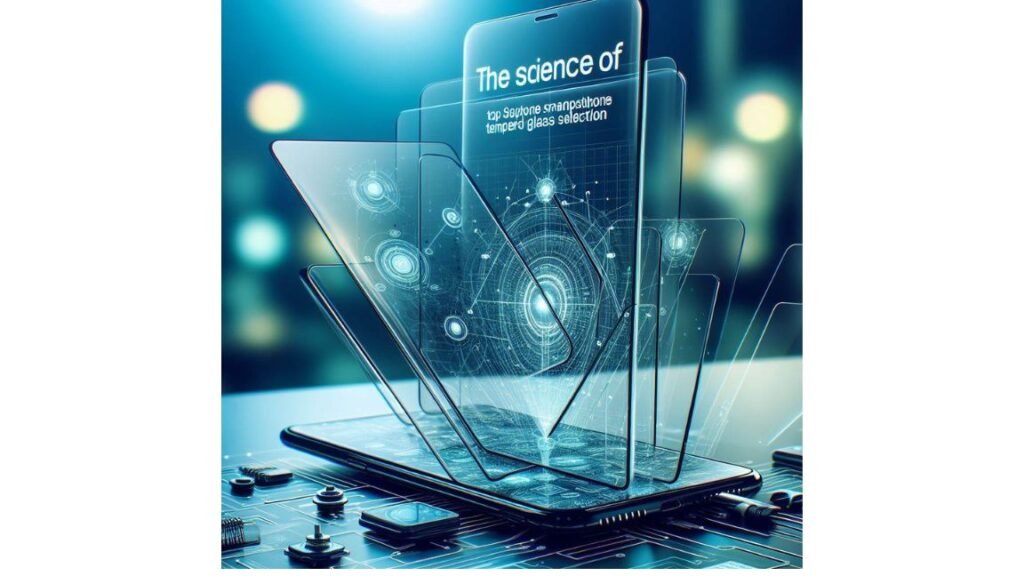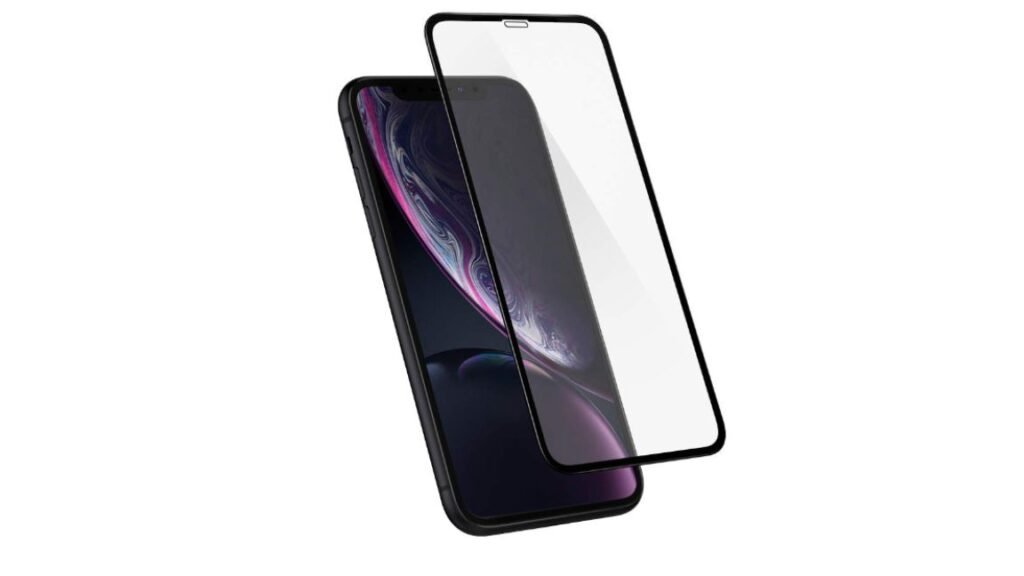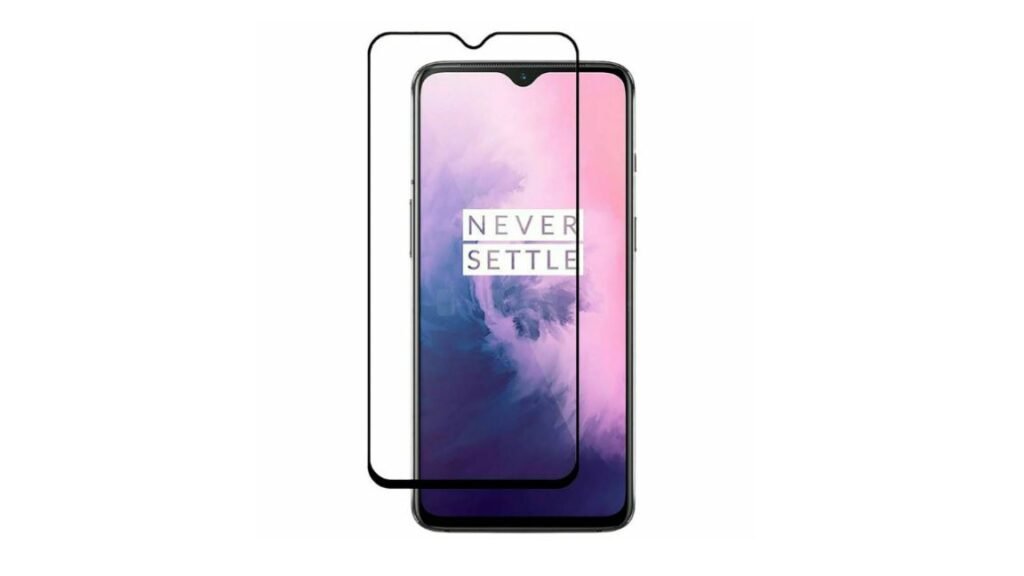Is There Science Behind the Best Tempered Glass for Smartphones?
In the world of smartphones, where sleek designs meet cutting-edge technology, protecting your device’s screen is paramount. Enter tempered glass, a remarkable fusion of science and practicality that not only shields your smartphone but does so with finesse. In this exploration, we delve into the physics behind tempered glass and discover why it stands out as the top choice for safeguarding devices across brands like Samsung, iPhone, and OnePlus.

What Sets Tempered Glass Apart?
At its core, tempered glass is regular glass that undergoes a thermal tempering process, enhancing its strength and durability. This process involves heating the glass to high temperatures and then rapidly cooling it, creating a product that is several times stronger than untreated glass. The secret lies in the molecular structure, where compressive and tensile stresses make tempered glass resilient to scratches and impacts.
How Does Tempered Glass Work on Various Smartphone Models?
Samsung
Samsung smartphones, known for their vibrant displays, find an ideal companion in tempered glass. The tempered glass layer seamlessly adheres to the screen, maintaining the device’s clarity and touch sensitivity. The robust nature of tempered glass becomes particularly crucial for Samsung’s flagship models, offering unparalleled protection against accidental drops and everyday wear.

iPhone
For iPhone users, the sleek aesthetics of their devices are complemented by the strength of tempered glass. Apple’s Retina displays benefit from the scratch resistance of tempered glass, ensuring that the visual experience remains uncompromised. The precisely engineered cutouts in tempered glass maintain the responsiveness of iPhone touchscreens, providing a seamless user experience.

OnePlus
OnePlus enthusiasts, drawn to the brand’s commitment to speed and performance, appreciate tempered glass for its compatibility. The durability of tempered glass aligns with OnePlus’s emphasis on robust design, offering a reliable shield against scratches and minor impacts. The transparency of tempered glass ensures that the vivid colors on OnePlus screens shine through without distortion.

Understanding the Physics: The Strength of Tempered Glass in Smartphones
Tempered glass, a crucial component in smartphone screen protection, is not just a routine glass; it’s a material with unique strength, owing to the intricate physics behind its manufacturing process.
What makes tempered glass so strong compared to annealed glass?
Tempered glass is approximately four times stronger than annealed glass. This enhanced strength arises from the rapid contraction of the outer layer during manufacturing, inducing compressive stresses on the glass surface, while the body of the glass experiences tensile stresses. This intricate dance of stresses makes tempered glass resilient and robust.
How is the strength of tempered glass measured?
Fully tempered 6-mm thick glass is subjected to specific requirements to be considered safety glass. It must have either a minimum surface compression of 69 MPa (10,000 psi) or an edge compression of not less than 67 MPa (9,700 psi). To qualify as safety glass, the surface compressive stress should exceed 100 megapascals (15,000 psi). These stringent criteria ensure that tempered glass provides optimal strength.
Why does tempered glass break into small rounded chunks instead of sharp shards?
The increased surface stress in tempered glass results in a unique breakage pattern. When broken, tempered glass shatters into small, rounded chunks instead of sharp, jagged shards. This is a safety feature, minimizing the risk of injury and damage.
How do compressive surface stresses contribute to the strength of tempered glass?
Compressive surface stresses play a pivotal role in enhancing the strength of tempered glass. In contrast to annealed glass, which forms microscopic cracks on its surface, the compressive stresses on tempered glass prevent the propagation or expansion of flaws. This containment mechanism significantly increases the glass’s resistance to breaking.
Why is annealed glass more fragile compared to tempered glass?
Annealed glass, with almost no internal stress, is more fragile than tempered glass. It tends to form microscopic cracks on its surface, making it susceptible to tension-induced crack propagation. This fragility results in irregular and sharp pieces when broken, posing a higher risk of injury.
What precautions are necessary during the cutting and grinding process of tempered glass?
Cutting or grinding must be done prior to tempering. Any post-tempering cutting, grinding, or sharp impacts can cause the glass to fracture. This emphasizes the importance of precision during the manufacturing process to maintain the integrity of tempered glass.
Can the strain pattern resulting from tempering be observed?
Yes, the strain pattern resulting from tempering can be observed using an optical polarizer, such as a pair of polarizing sunglasses. This allows one to witness the unique strain patterns that contribute to the strength and resilience of tempered glass.
Why Should You Choose Tempered Glass?
Crystal Clear Transparency: Tempered glass maintains the clarity of your smartphone’s display, ensuring that colors pop and details shine through without any distortion.
Scratch Resistance: The tempered surface acts as a barrier against scratches, preserving the pristine look of your smartphone screen even after prolonged use.
Impact Absorption: Tempered glass provides a protective layer that absorbs and disperses impact energy, minimizing the risk of cracks or shattered screens in the event of accidental drops.
Compatibility Across Brands: Whether you own a Samsung, iPhone, OnePlus, or any other smartphone brand, tempered glass is universally compatible, offering reliable protection for various devices.
Summing Up!
The best-tempered glass for smartphones is not just a protective accessory; it’s a testament to the marriage of science and practicality. By understanding the physics behind tempered glass, users can appreciate how this transparent shield adds a layer of resilience to their beloved devices, ensuring that smartphones remain both stylish and safeguarded.
FAQs
1. What is tempered glass, and why is it recommended for smartphones?
Tempered glass is a type of glass that undergoes a special heat treatment, making it stronger and more durable. It’s recommended for smartphones due to its enhanced resistance against scratches and impacts.
2. How does tempered glass differ from regular glass or plastic screen protectors?
Tempered glass is significantly stronger than regular glass or plastic protectors. It undergoes a thermal tempering process, introducing compressive stresses that make it more resistant to scratches and impacts.
3. Can tempered glass protect my smartphone screen from shattering?
Yes, one of the primary benefits of tempered glass is its ability to absorb and disperse impact energy, reducing the likelihood of your smartphone screen shattering upon accidental drops.
4. Does tempered glass affect the touch sensitivity of my smartphone?
In most cases, tempered glass does not significantly affect touch sensitivity. High-quality tempered glass maintains the responsiveness of your smartphone’s touch screen.
5. How do I install tempered glass on my smartphone, and is it easy to do myself?
Installing tempered glass is typically straightforward. Most kits come with step-by-step instructions, cleaning tools, and alignment aids. It’s designed to be user-friendly, but precision during installation is crucial for optimal performance.
6. Can I use tempered glass with other smartphone accessories like stylus pens?
Yes, tempered glass is compatible with various smartphone accessories, including stylus pens. It doesn’t interfere with the functionality of these accessories and provides an additional layer of protection.
7. How often should I replace my tempered glass screen protector?
The lifespan of a tempered glass screen protector depends on factors such as usage and the quality of the protector. Regularly inspect it for scratches or signs of wear, and replace it when necessary to maintain optimal protection.
8. Will tempered glass fit my specific smartphone model, or is it universal?
Many manufacturers offer tempered glass protectors specifically designed for various smartphone models. Ensure you choose one that is compatible with your device for a perfect fit.
9. Can I remove and reapply tempered glass if I make a mistake during installation?
Removing and reapplying tempered glass can be challenging once it has adhered to the screen. It’s recommended to get it right during the initial installation to avoid compromising its effectiveness.
10. Does tempered glass provide any additional benefits beyond scratch and impact protection?
Yes, besides scratch and impact protection, tempered glass can have additional features such as anti-glare coatings, oleophobic coatings to resist fingerprints, and enhanced clarity for an improved viewing experience.

